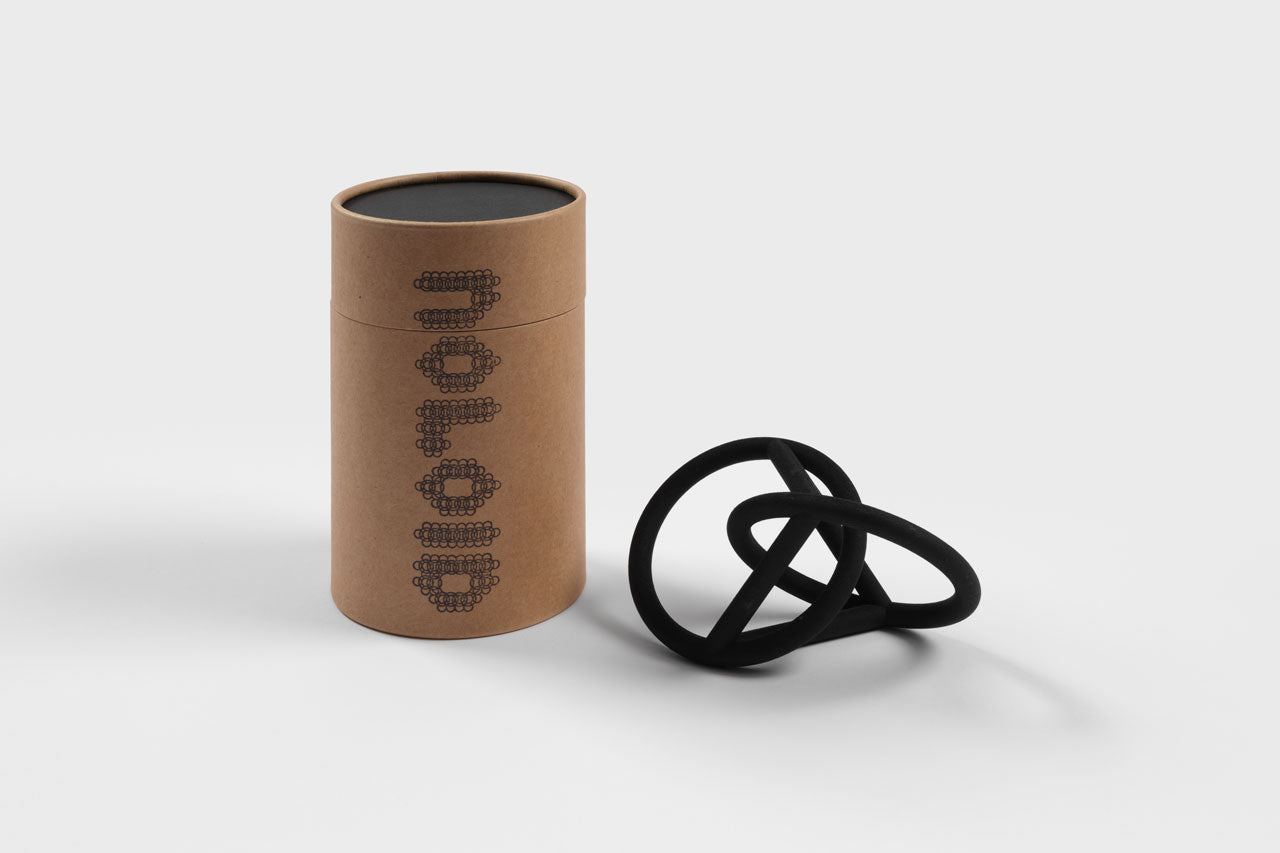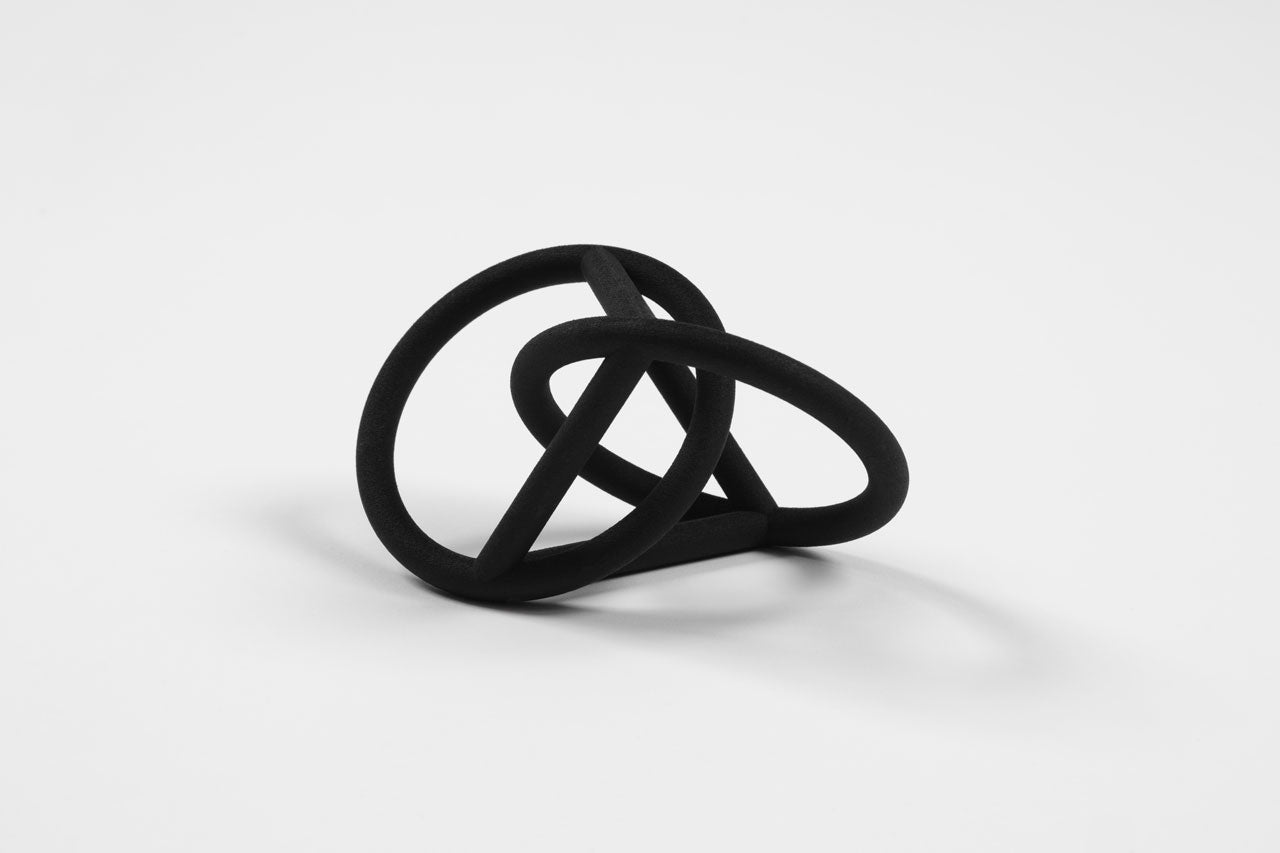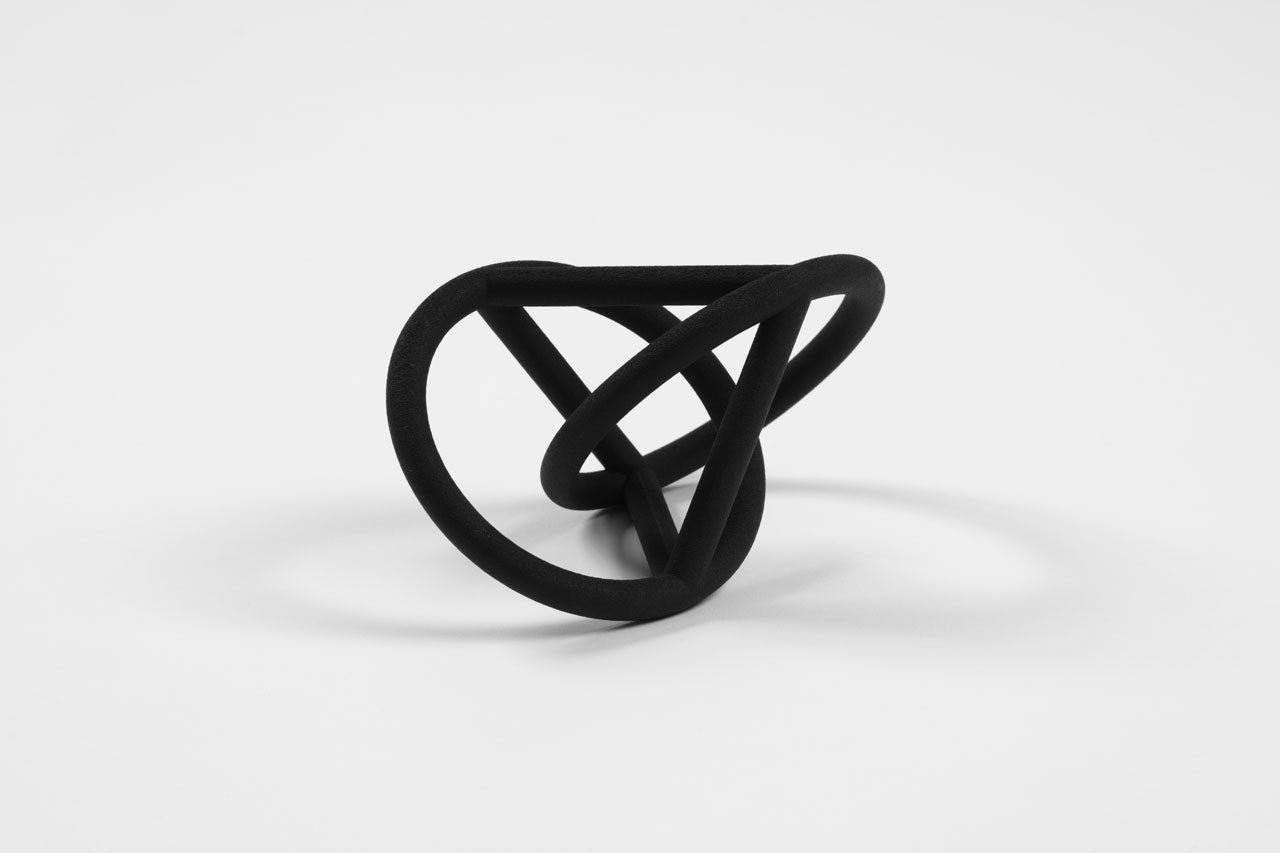




The Oloid is a shape discovered by Paul Schatz in 1929— the convex hull generated around two identical circles which are interlocked perpendicular to one another and spaced such that the edge of each passes through the center of the other. It is typically expressed as a solid.


This shape is special in a number of ways:
-Its internal structure is a vesica piscis with one of the circles rotated 90 out of the plane. It could be thought of as a 3-dimensional analog to this mystically charged shape.

-Its volume is equal to that of a sphere with the same radius.
-It is a developable surface, meaning its skin can be flattened into a plane without being distorted. This is the oloid unfolded:

-When rolled, the Oloid travels in a straight line, but waddles back and forth across it. This is its path:

-It has unique fluid mixing and propulsion capabilities, and is used in a number of industrial applications.
The NOLOID is a wireframe of the internal structure— leaving out the surface and the volume.
I fell in love with this shape because it sits at the intersection of two of my interests: special geometric surfaces and chainmaille — metal fabric made from interlocking rings. The release of the Noloid coincides with the publication of four type specimens built on the structure of the Japanese chainmaille weave Hitoye-Gusari. The lettering on the Noloid’s housing is in the Japanese Chainmaille (Lace) typeface.
If you are interested in reading further about the Oloid, I recommend the article “The Development of the Oloid” by Hans Dirnböck and Hellmuth Stachel in the Journal for Geometry and Graphics, Volume 1 (1997).
All images and works copyright Diagonal Press.